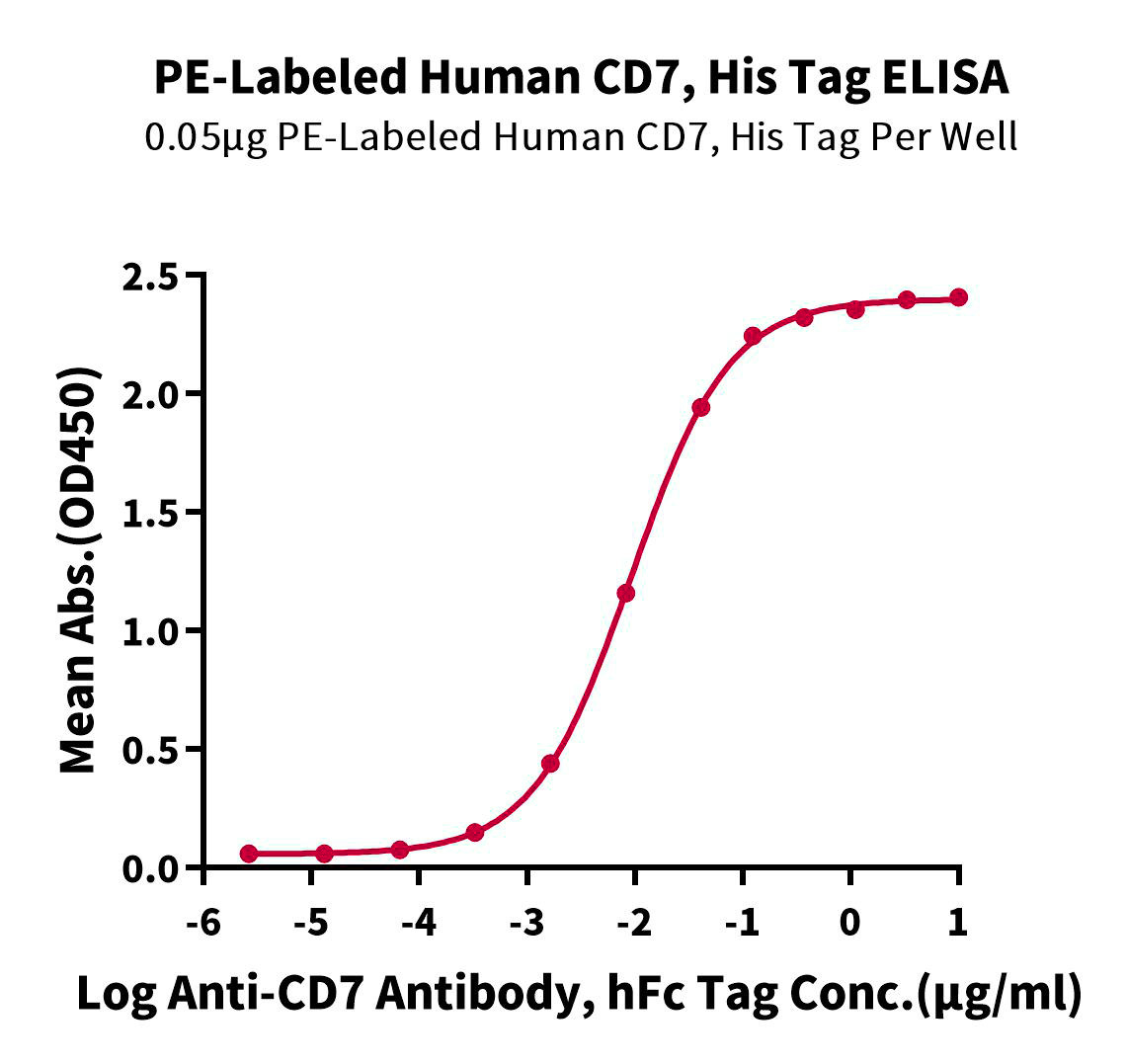Description
PE-Labeled Recombinant Human CD7 Protein
The PE-Labeled Recombinant Human CD7 Protein is a biologically active recombinant protein that plays a significant role in various cellular processes and signaling pathways in human biology. This protein is widely employed in immunological research, cell biology studies, protein-protein interaction analyses, and therapeutic development, providing researchers with a reliable tool for investigating PE-Labeled CD7 function and its implications in health and disease.
This product (SKU: RPCB0691) is produced using advanced expression systems and features a C-His&Avi tag for convenient detection and purification. The protein exhibits a calculated molecular weight of 19.3 kDa with an observed molecular weight of - under denaturing conditions, achieving -, ensuring exceptional quality and consistency for research applications.
Key Features
| High Purity by Affinity Chromatography | |
| Mammalian & Bacterial Expression Systems | |
| High lot-to-lot consistency via strict QC |
| Product Name: | PE-Labeled Recombinant Human CD7 Protein |
| SKU: | RPCB0691 |
| Size: | 100 μg |
| Reactivity: | Human |
| Synonyms: | CD7 molecule, CD7, LEU-9, Tp40, TP41, GP40 |
| Tag: | C-His&Avi |
| Calculated MW: | 19.3 kDa |
| Gene ID: | 924 |
| Protein Description: | High quality, high purity and low endotoxin recombinant PE-Labeled Recombinant Human CD7 Protein (RP00588PLQ), tested reactivity in HEK293 cells and has been validated in SDS-PAGE.100% guaranteed. |
| Endotoxin: | < 1 EU/μg of the protein by LAL method |
| Formulation: | Supplied as 0.22 μm filtered solution in PBS (pH 7.4). |
| Storage: | Store at -70℃. This product is stable at ≤ -70℃ for up to 1 year from the date of receipt. For optimal storage, aliquot into smaller quantities after centrifugation and store at recommended temperature. Avoid repeated freeze-thaw cycles. |
CD7, also known as Leu-9, is an approximately 40 kDa glycosylated and palmitoylated transmembrane protein in the immunoglobulin superfamily.CD7 is expressed on T cells, NK cells, myeloid progenitor cells, and CD19 B progenitor cells. Among CD8 T cells, the CD7-bright population preferentially contains na?ve and memory cells, while more weak expressors are primarily effector cells.





